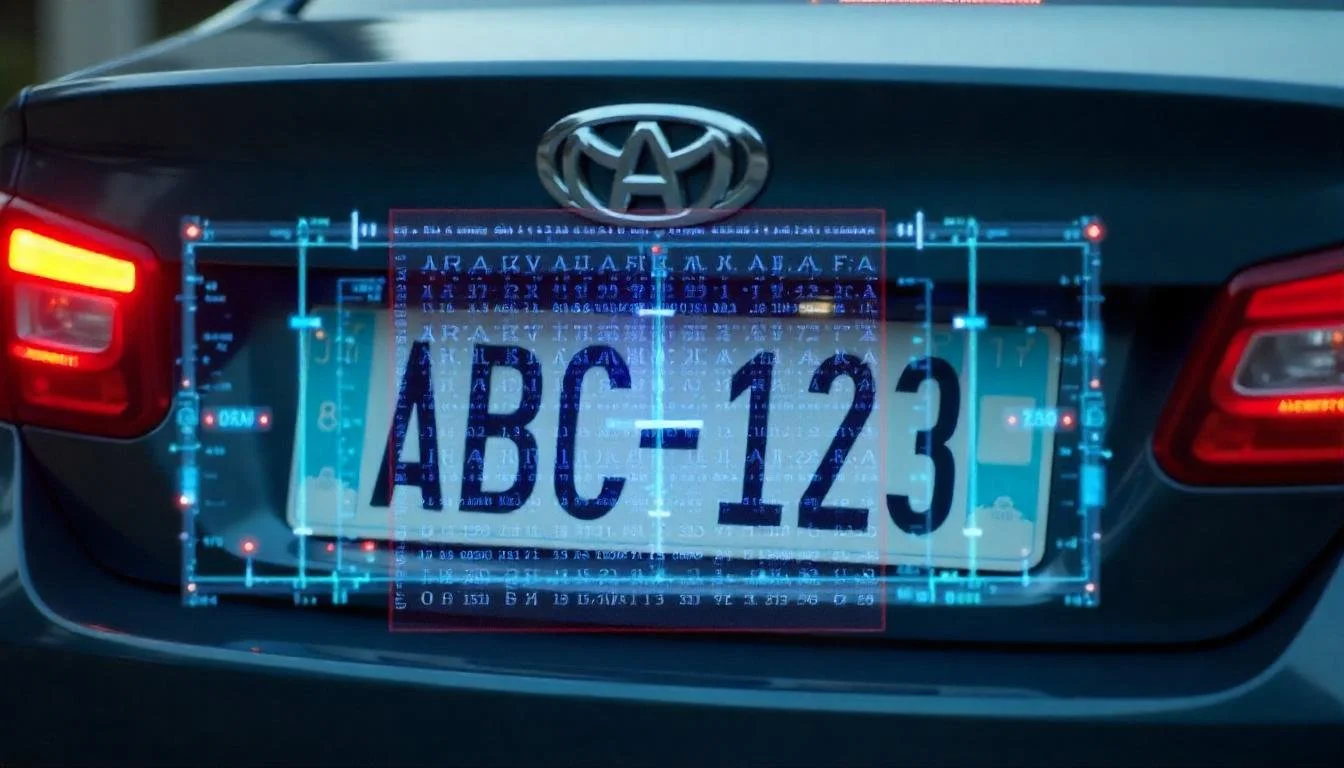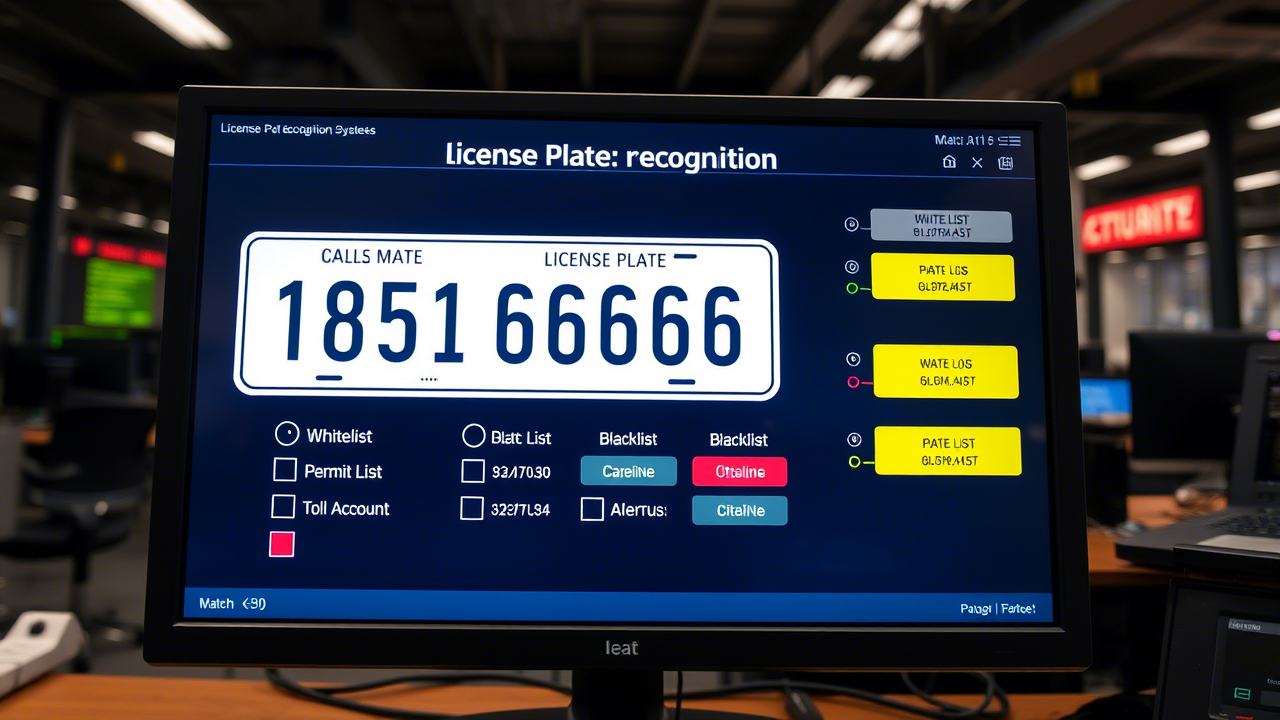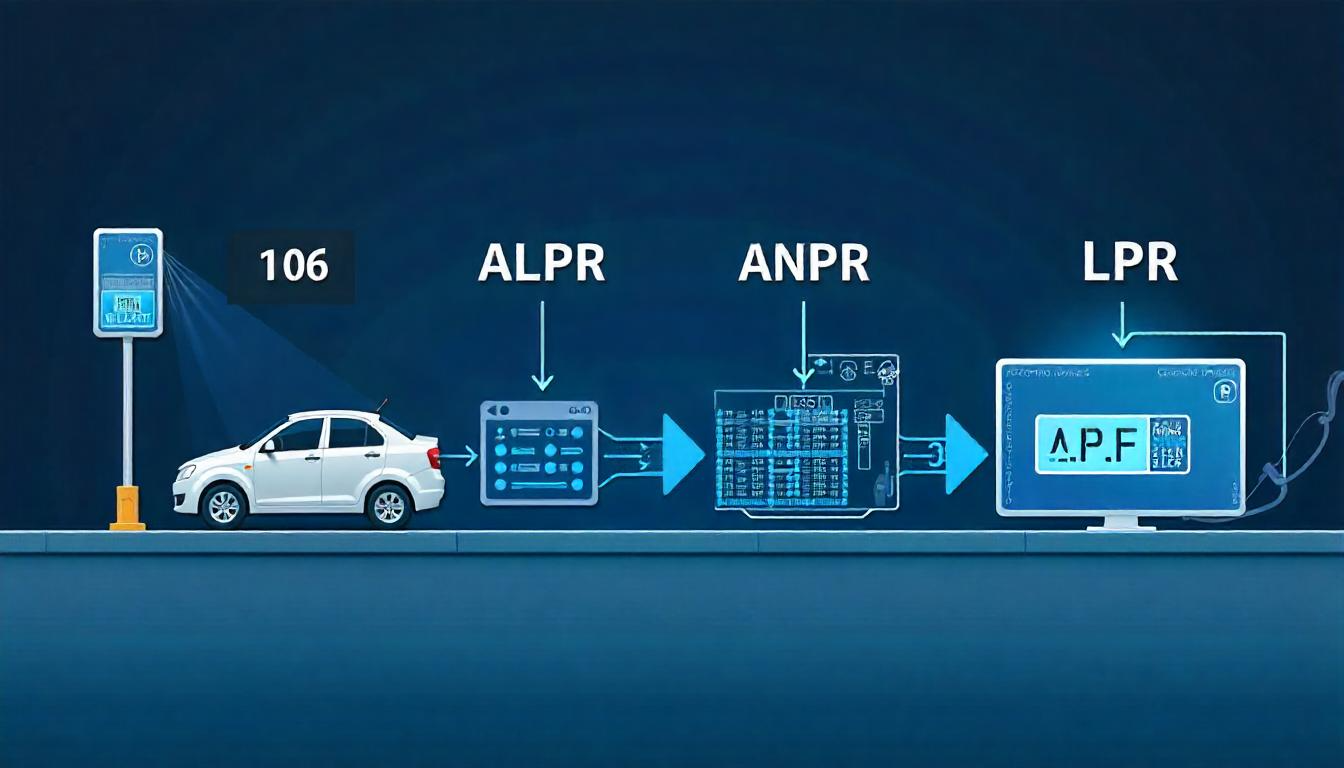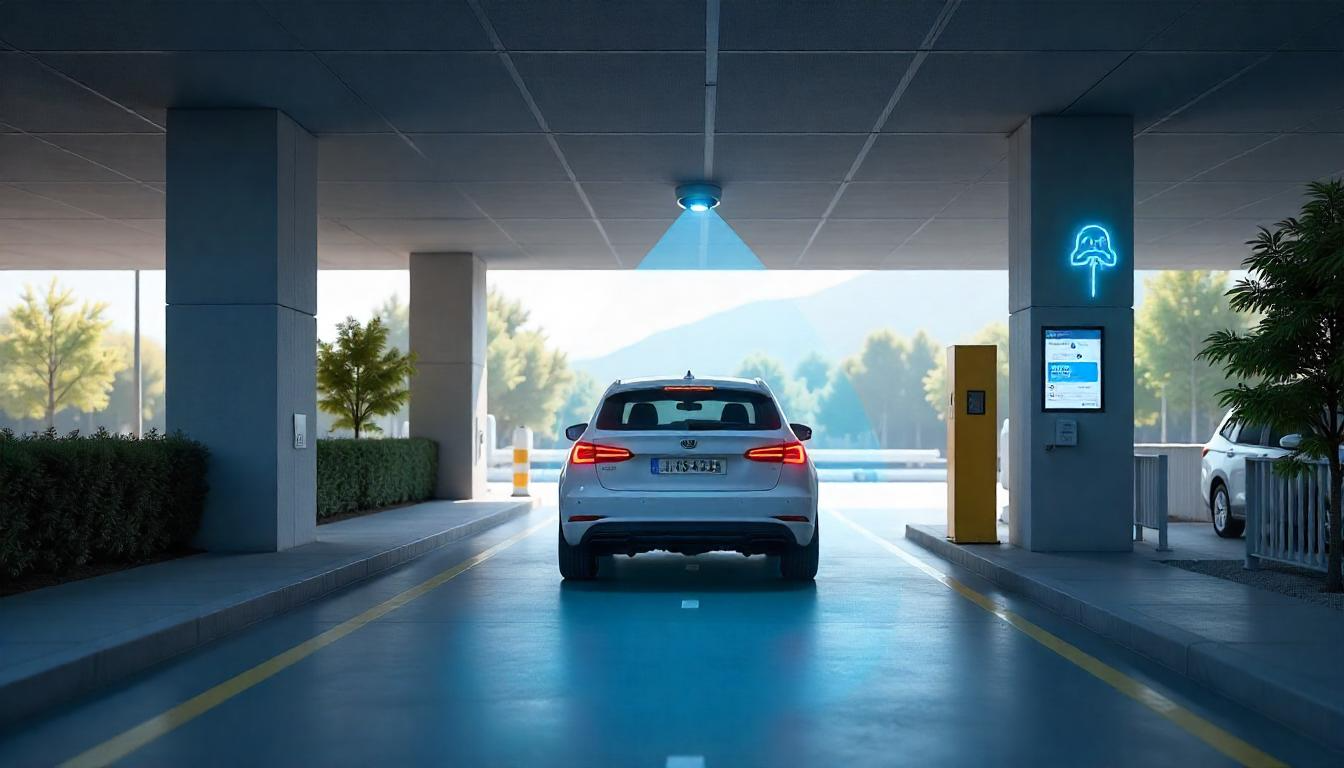ALPR vs ANPR vs LPR: What’s the Difference?
If you've spent any time exploring modern security technologies, traffic management solutions, or smart city infrastructure, you've likely come across three acronyms that seem to mean the same thing: ALPR, ANPR, and LPR. Although used interchangeably, these acronyms often cause confusion among potential buyers, operators, and stakeholders.
So, are ALPR, ANPR, and LPR different technologies? Which one is more advanced? And which system should you invest in to future-proof your operations?
ALPR license plate recognition technology tracking vehicles in city traffic with police car and surveillance control room monitors
Here's the short answer: they all refer to license plate recognition technology, but the terminology varies by region. More importantly, while the names may be interchangeable, not all systems are created equal.
In this article, we'll unpack what each acronym means, how the technology works, where it is used, and what separates next-generation systems from traditional options.
Whether you're part of a law enforcement agency, transportation department,
Whether you're a private security firm or an urban planning committee, this article will help you understand.
What Do ALPR, ANPR, and LPR Mean?
| Acronym | Full Form | Region Commonly Used |
|---|---|---|
| ALPR | Automatic License Plate Recognition | North America (mainly USA) |
| ANPR | Automatic Number Plate Recognition | UK, Europe, parts of Asia |
| LPR | License Plate Recognition | Interchangeable/Generic term |
While ALPR and ANPR reflect regional preferences (with "license" being used in the US and "number" in Europe), the underlying technology is the same. All three refer to the use of image-processing and OCR software to detect, read, and analyse vehicle license plates.
How License Plate Recognition Works
Regardless of whether you call it ALPR, ANPR, or LPR, the underlying technology is built on the same sequence of operations. Here's how the full license plate recognition workflow typically functions:
1. Image Capture
The process begins with high-resolution cameras either stationary or mobile, strategically positioned to capture vehicles as they pass. These cameras are often equipped with infrared (IR) illumination and wide dynamic range (WDR) to ensure clear image capture under varying conditions, including nighttime, fog, or glare from headlights.
2. Plate Detection
Once the image is captured, computer vision algorithms analyze the frame to identify the region of interest (ROI) that contains the license plate. This step is crucial for narrowing down the portion of the image that will be processed for text recognition.
Modern systems like Sighthound ALPR+ use AI-enhanced detection to filter out irrelevant objects and lock onto plates with exceptional precision, even at high speeds or awkward angles.
3. Character Segmentation
After isolating the plate, the system performs character segmentation, breaking the plate into individual alphanumeric components. This step ensures each character is properly isolated, even if fonts vary, letters are misaligned, or characters are slightly obscured.
Pro tip: OCR accuracy heavily depends on this step. Systems that struggle here will often produce false reads or miss characters altogether.
4. Data Conversion
Using Optical Character Recognition (OCR) software, the system translates the segmented characters into machine-readable text. This text is typically in the form of the vehicle's license plate number, which can then be used for various purposes, such as billing, enforcement, or security screening.
License plate recognition system with digital scanning overlay, detecting and processing vehicle plate number using ALPR computer vision technology
5. Database Matching
Once converted, the plate number is cross-referenced against a connected license plate database. This database may include:
Whitelists (authorized vehicles)
Blacklists (stolen or wanted vehicles)
Permit lists (for gated communities or employee parking)
Toll accounts (for automatic billing)
ALPR license plate recognition system interface showing detected plate number with whitelist, blacklist, and permit list management features on computer monitor
This matching process can be performed on the edge, on a local server, or in the cloud, depending on system design.
6. Trigger Response
Finally, based on the match result, the system initiates one or more automated actions. These may include:
Opening a barrier or gate for authorized vehicles
Triggering alerts for vehicles on watchlists
Logging entry and exit timestamps
Generating citations or enforcement notices
This final step turns LPR from passive monitoring into an active, real-time automation tool.
Similarities Between ALPR, ANPR, and LPR
Although these terms are used differently around the world, the core mechanism behind all three is fundamentally the same. Let's break down their key similarities:
License plate recognition system process flow diagram illustrating ALPR, ANPR, and LPR technology stages for automatic vehicle identification and plate detection
Core Functionality: At their heart, all three systems are designed to detect, recognise, and convert license plate information into digital data.
Input Devices: Whether it's a roadside surveillance camera or a high-speed mobile unit, all LPR variants rely on imaging devices to capture vehicle license plates.
Processing Units: Depending on the setup, these systems might operate on the camera itself (edge computing), on a local server, or via cloud infrastructure.
Software: All use OCR (Optical Character Recognition) engines to convert plate images into readable text. Some advanced systems also include AI to improve accuracy and add context.
Output: The final result typically includes the license plate number, timestamp of detection, camera location, and often geocoordinates.
Use Cases: Where the Difference Really Matters
While ALPR, ANPR, and LPR may technically refer to the same technology, real-world performance, especially under complex conditions, is where the actual differences emerge. Advanced systems, such as Sighthound's ALPR+, go far beyond simple plate reading, enabling intelligent automation and decision-making across a wide range of industries.
Below are the primary use cases where accuracy, context, and speed matter:
1. Law Enforcement
License plate recognition is a powerful force multiplier for public safety agencies.
Use case highlights:
Locate stolen or wanted vehicles in real time by scanning live video feeds and comparing against law enforcement databases.
Track vehicles of interest using make, model, colour, and generation (MMCG) even when plates are missing, altered, or obscured, a key edge in criminal investigations.
Trigger real-time alerts to patrol units or dispatch centres, enabling faster response times.
2. Access Control & Gated Communities
Modern access control systems rely on more than just RFID tags or access codes.
Use case highlights:
Authorise or deny vehicle entry using real-time license plate and MMCG recognition.
Automate gate operations by recognising enrolled vehicles, enhancing convenience for residents and staff.
Enhance perimeter security by detecting unknown or blacklisted vehicles attempting to gain entry.
3. Parking Management
Efficient, intelligent parking operations require more than basic surveillance.
Use case highlights:
Enable ticketless entry and exit using ALPR+ to identify vehicles and record timestamps automatically.
Prevent parking abuse, such as misuse of reserved or EV-only spots, by identifying unauthorised vehicles based on their attributes.
Support dynamic pricing by calculating parking fees based on dwell time or usage patterns.
Vehicle passing through automated parking garage access control system with license plate recognition scanner and digital terminal for contactless entry
4. Smart Cities
As cities become more connected, vehicle intelligence plays a key role in urban planning and traffic optimisation.
Use case highlights:
Analyse vehicle flow and congestion using real-time movement tracking and classification.
Implement emissions-based zones by detecting vehicle type and compliance status.
Integrate with traffic signals and ITS platforms to reduce bottlenecks and improve safety.
5. EV Charging Networks
With the acceleration of EV adoption, efficient management of charging infrastructure is vital.
Use case highlights:
Detect unauthorised vehicles using EV-only charging stations, helping enforce proper usage.
Automatically link vehicles to user accounts, simplifying billing and reducing wait times.
Monitor occupancy and availability of charging stations in real-time.
Sighthound ALPR+
Sighthound ALPR+ represents a transformative leap in license plate recognition technology. More than just a plate reader, ALPR+ is a fully integrated, AI-powered vehicle intelligence platform. It is built to deliver exceptional accuracy, real-time insights, and actionable data, right at the edge.
What sets ALPR+ apart is its ability to go beyond characters on a plate. By combining cutting-edge computer vision with deep learning models, ALPR+ provides a comprehensive understanding of each vehicle it encounters.
ALPR+ Features
Make, Model, Colour, and Generation (MMCG) Recognition: Accurately identifies detailed vehicle attributes for better filtering, search, and analytics.
License Plate Detection Across 100+ Countries: Built-in localisation makes it ideal for global deployments and international operations.
Real-Time Vehicle & Object Tracking: Continuously monitors vehicle movement, enabling proactive security and traffic flow management.
Edge Deployment with GPU Acceleration: Enables fast, offline operation with reduced latency and minimal bandwidth usage.
Flexible API Integrations: Easily connects with existing VMS, access control, tolling, or smart city platforms.
Privacy Compliance and Redaction Options: Supports privacy-focused operations with built-in redaction and encryption protocols.
"ALPR+ doesn’t just read plates. It understands the entire vehicle context."
Whether you’re securing a facility, managing parking operations, or optimising urban mobility, Sighthound ALPR+ delivers unmatched intelligence and reliability.
Ready to Upgrade Your Vehicle Recognition Capabilities?
Understanding the terms ALPR, ANPR, and LPR is only the first step. The real differentiator lies in how effectively a system can perform in real-world environments.
If your organisation values real-time insights, edge-based performance, and contextual vehicle recognition, then a traditional LPR system won't be enough.
Want to see AI-powered LPR in action? Explore Test Drive ALPR+ Now For Free.
For business opportunities, explore our Partner Program today.
FAQ Section:
-
License plate recognition cameras go by several acronyms, each with slight variations in technology and regional preferences:
LPR Camera: License Plate Recognition Camera
ANPR Camera: Automatic Number Plate Recognition Camera
ALPR Camera: Automated License Plate Reader Camera
NPR Camera: Number Plate Recognition Camera
While often used interchangeably, these terms may indicate different capabilities depending on the manufacturer.
-
Plate Capture (LPC) Camera?
The main difference is that a License Plate Recognition (LPR) camera uses AI to analyze a plate and provide information, whereas License Plate Capture (LPC) simply describes a standard security camera positioned to record license plates.
-
LPR (License Plate Recognition) and ANPR (Automatic Number Plate Recognition) are essentially the same technology, differing only in regional terminology. Both use AI to automatically read license plates, though specific features may vary between manufacturers.
-
Modern AI-powered LPR cameras achieve over 95% accuracy in optimal conditions. Performance depends on:
Camera resolution and positioning
Vehicle distance and angle
Weather and lighting conditions
License plate condition and visibility
-
Yes, LPR cameras work 24/7 using infrared (IR) illumination technology. Built-in IR illuminators emit invisible infrared light, enabling transparent license plate reading in complete darkness and low-light conditions.
-
Yes, LPR cameras equipped with radar sensors or integrated with speed measurement systems can automatically detect vehicle speeds and flag speeding violations for traffic enforcement applications.





